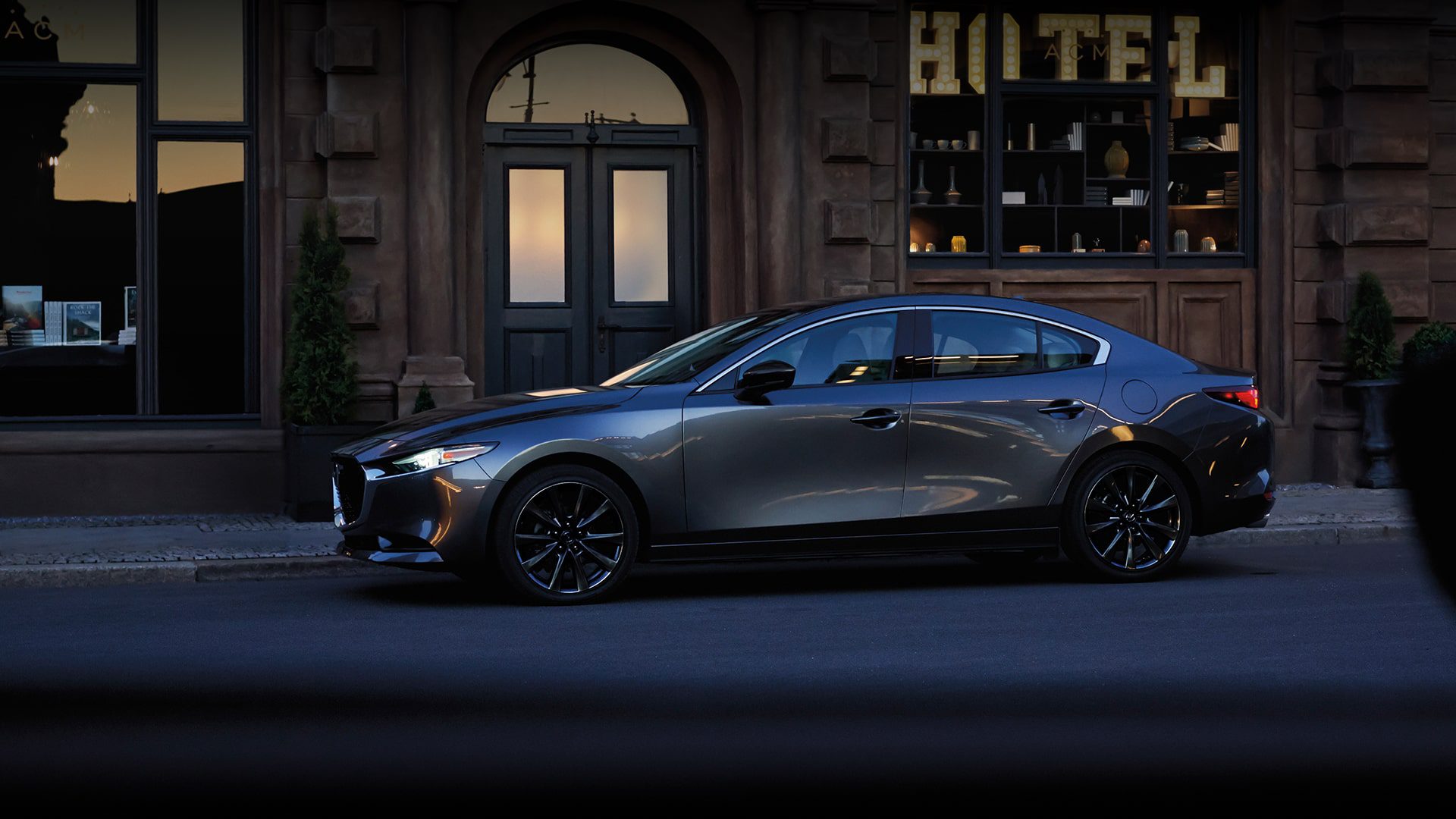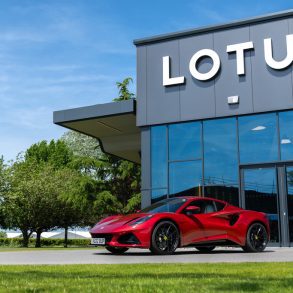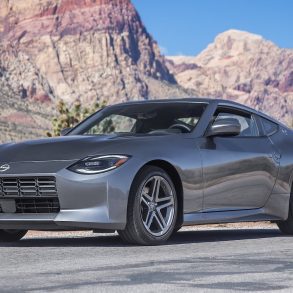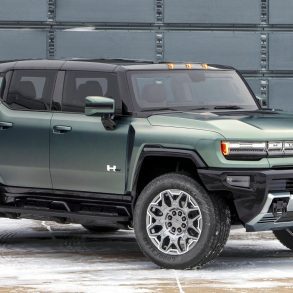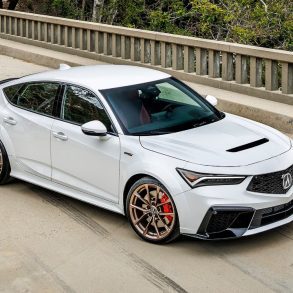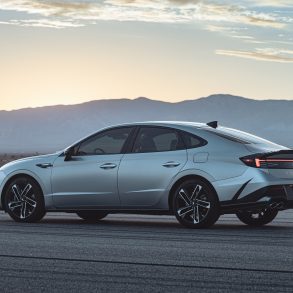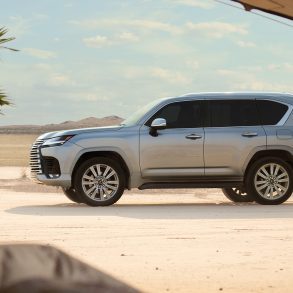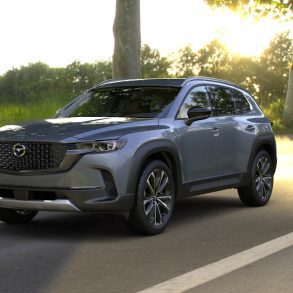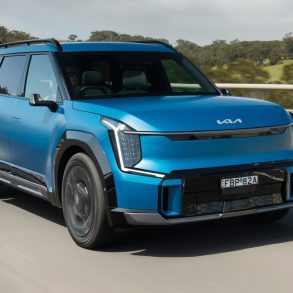Mazda Sales Data, Trends & Analysis for the European Automotive Market
Mazda sales and market share in Europe have been falling steadily from 2009 to 2012, but have taken a turn in 2013 as the brand’s volume increased 88% from 2012 to 2016 to almost return to its 2008 level. In 2017 its sales stabilized at just under 230.000 sales.
The introduction of the CX-5 midsized crossover in the beginning of 2012 had been unable to offset sales declines of the other models that year, but quickly became the brand’s best seller in the following years. The new generation Mazda6, introduced in the last quarter of 2012 and the CX-5 gaining steam pushed the brand forward in 2013. This momentum continued in 2014, as the new generation Mazda3 was introduced in the second half of 2013, and doubled in sales the next year.
As the brand didn’t replace the Mazda5 midsized MPV and CX-7 crossover, but it did launch new generations of the MX-5 roadster and the Mazda2 subcompact hatchback, the brand’s best selling car from 2009 to 2012, both in 2015. The former returned to its 2008 level in 2016, but the Mazda2 suffers from increased competition in the subcompact car segment, and from internal cannibalization by the newly launched CX-3 small crossover, also in 2015. The CX-3 quickly closed in on the CX-5 as Mazda’s best selling model, but a new generation of the latter, launched in 2017 will counter that.
Unlike most automakers, Mazda has decided not to join the downsizing and electrification trends, and is relying on a further improvement of fuel economy by enhancing the efficiency of the engine and other relatively low-tech solutions under its SkyActiv label. For example, the Mazda3 is the only compact segment car with an “old fashioned” normally aspirated 2.0 liter engine instead of a frugal but vulnerable smaller turbocharged unit. Yet the difference in fuel consumption between the Ford Focus 1.0 3-cylinder turbo “engine of the year” with 125 horsepower and the Mazda3 2.0 4-cylinder non-turbo is only 0,1 liter per 100 km, or 4 grams of CO2 per km.
With ever more reports on the higher maintenance costs and lower lifespan of those downsized turbo-engines surfacing, let’s hope other manufacturers realize that Mazda actually has a point here, and the recent sales success and positive press-reception may back it up.
Mazda Europe Sales Figures & Recent Highlights
Mazda launched the all-new CX-60 SUV in Europe in 2022. The CX-60 is the first Mazda model to be built on the company’s new Skyactiv Multi-Solution Scalable Architecture (SMAS) platform. Mazda also launched the all-new MX-30 EV in Europe in 2022. The MX-30 is Mazda’s first electric vehicle. Mazda plans to launch two more electric vehicles in Europe in 2023.
Mazda Annual Sales Data and Market Share in Europe
Below we have a table that shows total Mazda sales volumes for the European automotive market, broken out by year. This data captures all Mazda vehicle sales for the entire European automotive market.
| Year | Sales | YOY Change | Marketshare | Marketshare Change |
|---|---|---|---|---|
| 1997 | 169,929 | 0.00 | 2.06 | 0.00 |
| 1998 | 195,991 | 15.34 | 2.07 | 0.64 |
| 1999 | 180,201 | -8.06 | 1.59 | -30.14 |
| 2000 | 153,646 | -14.74 | 1.31 | -21.17 |
| 2001 | 111,434 | -27.47 | 0.90 | -46.30 |
| 2002 | 133,042 | 19.39 | 1.06 | 15.64 |
| 2003 | 194,408 | 46.13 | 1.55 | 31.26 |
| 2004 | 252,023 | 29.64 | 1.81 | 14.37 |
| 2005 | 234,752 | -6.85 | 1.68 | -7.30 |
| 2006 | 254,484 | 8.41 | 1.85 | 8.77 |
| 2007 | 239,355 | -5.94 | 1.73 | -6.57 |
| 2008 | 241,697 | 0.98 | 1.88 | 7.67 |
| 2009 | 213,141 | -11.81 | 1.62 | -15.87 |
| 2010 | 182,704 | -14.28 | 1.44 | -12.08 |
| 2011 | 137,961 | -24.49 | 1.10 | -31.75 |
| 2012 | 123,715 | -10.33 | 1.09 | -0.48 |
| 2013 | 146,323 | 18.27 | 1.29 | 15.48 |
| 2014 | 173,191 | 18.36 | 1.44 | 10.17 |
| 2015 | 209,235 | 20.81 | 1.62 | 11.43 |
| 2016 | 271,015 | 29.53 | 1.96 | 17.08 |
| 2017 | 300,791 | 10.99 | 2.07 | 5.59 |
| 2018 | 292,426 | -2.78 | 2.04 | -1.54 |
| 2019 | 298,750 | 2.16 | 2.03 | -0.77 |
| 2020 | 198,573 | -33.53 | 1.77 | -14.41 |
| 2021 | 176,197 | -11.27 | 1.59 | -11.29 |
| 2022 | 137,561 | -21.93 | 1.34 | -18.86 |
Mazda Europe Annual Sales Units & Market Share Chart
Below is a visual representation of Mazda Europe sales units over time. We have both the Mazda sales units and the market share in the European market. Click on the items in the legend to see each series by itself.
Mazda Europe Growth Rate & Market Share Chart
Below is the annual growth rate for the Mazda brand in Europe, shown against the Mazda’s marketshare changes in Europe. This gives you a good look into how Mazda has faired against the other brands in terms of absolute sales and effect on marketshare. Click on the items in the legend to see each series by itself.
The Best-Selling Mazda Cars & SUVs in Europe
COMING SOON
Sources: Manufacturers, ANDC, JATO Dynamics.

